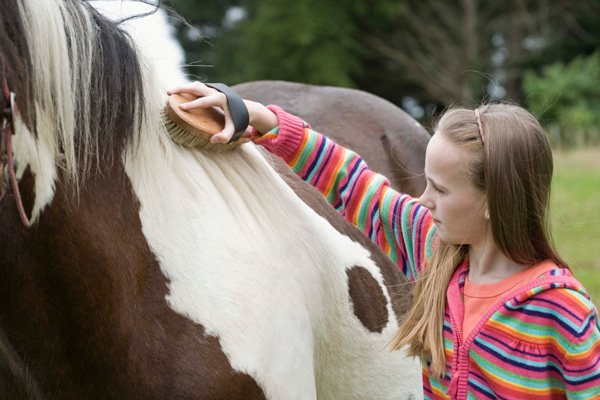
Many horse farms fight an annual battle with poison ivy, especially in the eastern part of the county. And even if you don’t have it on your property or you live in another area of the country, you should be aware of what it is in case you encounter it while riding or visiting friends. The University of Kentucky College of Agriculture’s William Witt, PhD, gave us the following information about this plant and how to identify it. Be cautious in eradicating poison ivy as some people are very allergic.
Eastern poison ivy, frequently just called poison ivy, occurs in much of the eastern United States. It is a woody perennial that can grow as a low shrub, trailing vine or climbing vine. As a climbing vine, it often reaches into the tops of trees. It will grow in a wide range of habitats, such as pastures, fence rows and the edge of woods.
Poison ivy roots are fibrous from a taproot (the main root that grows vertically downward) and long subterranean rhizomes (root stalks). Vines are woody and light brown or grayish and frequently have aerial roots on them. Poison ivy’s easiest identifying characteristic is a trifoliate (having three leaves) compound leaf. Leaflets are shiny, typically 2 to 4 inches in length, and pointed at the tip. Leaves turn a bright red or reddish-yellow in the fall and produce greenish to grayish white berries in late summer to early fall. Reproduction is by seeds, rootstalks and stems that root when they come into contact with the soil. Berries are spread by birds.
All parts of the poison ivy plant, both live and dead, contain urushiol oil and might cause acute dermatitis to humans sensitive to the oil. Fumes from burning poison ivy plants might also transmit the oil. Animals such as cats, dogs and horses are not sensitive to poison ivy, but they can transfer the oil to humans if they rub against the plant and you rub the horse.

Poison ivy plants in pastures usually grow low to the ground, and mowing is not an effective control tactic. Cutting the vines and removing plants from fences or trees does not offer long-term control since the poison ivy plant will regrow from root buds or rhizomes. The most effective control is by herbicidal sprays. Several herbicide products are available to control poison ivy. Consult the Cooperative Extension Service personnel in your state for herbicidal control in your area.


